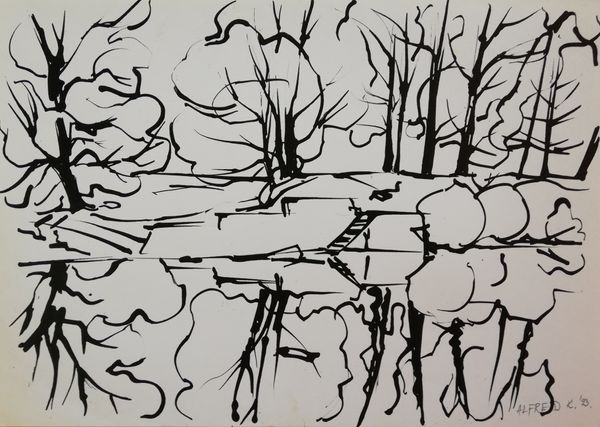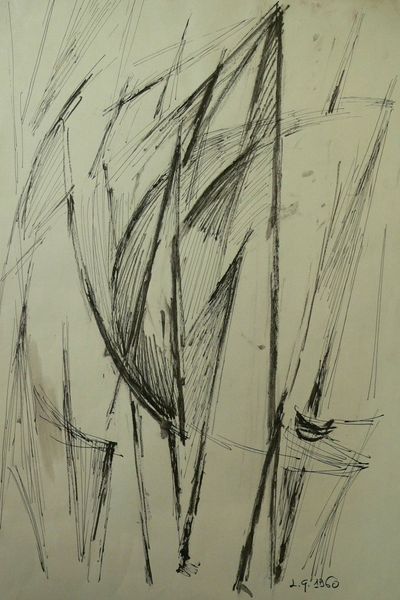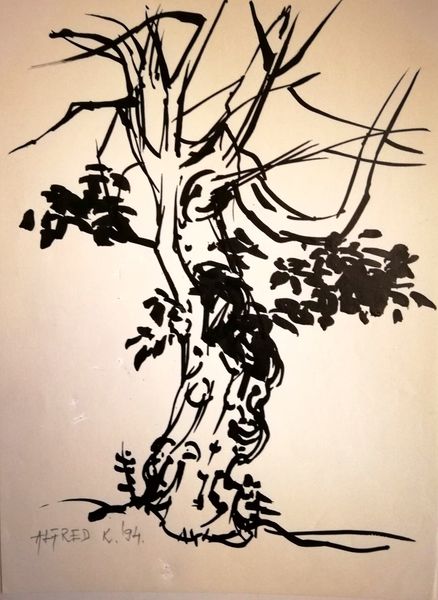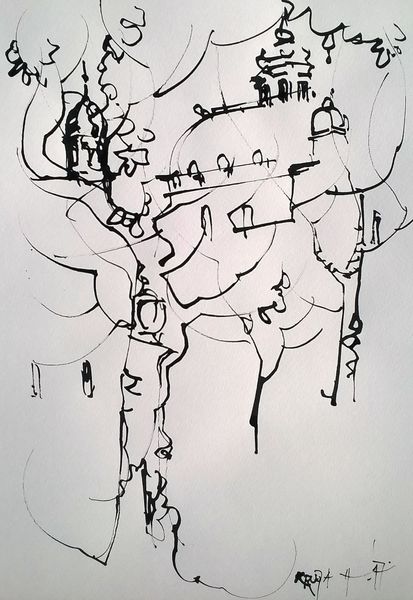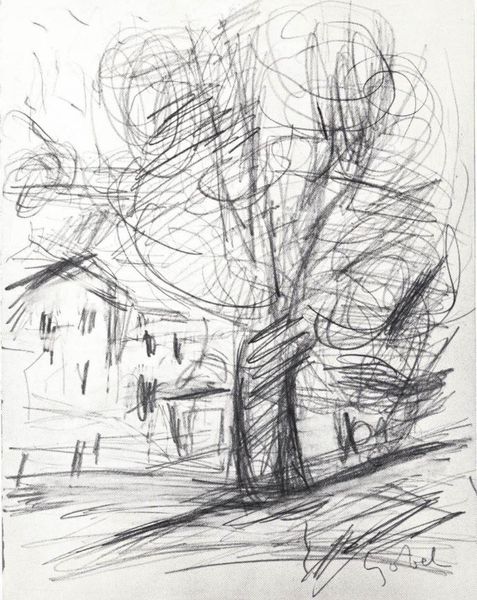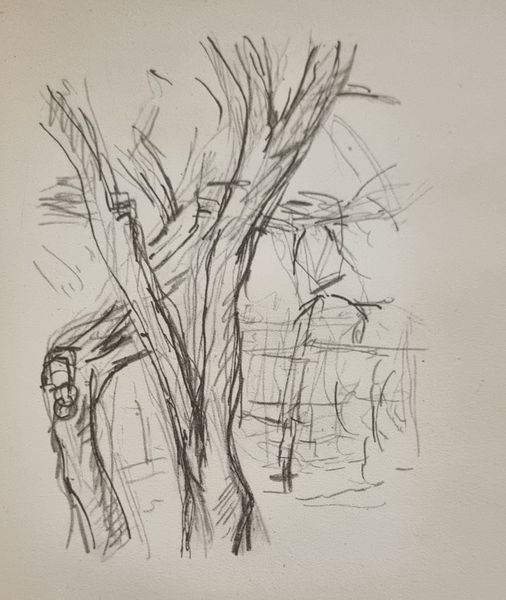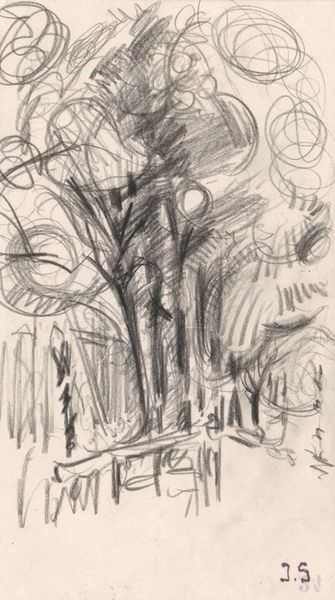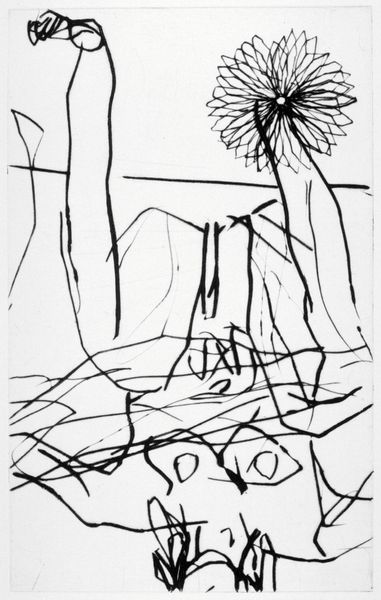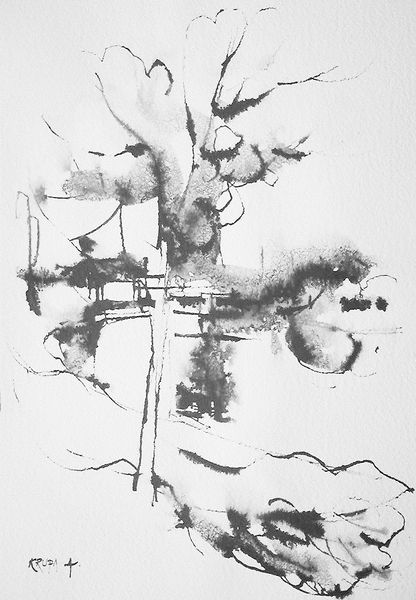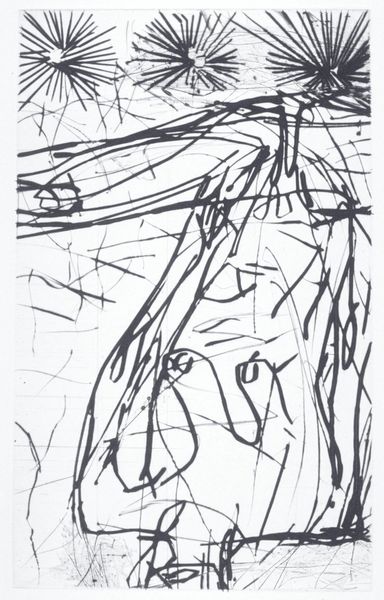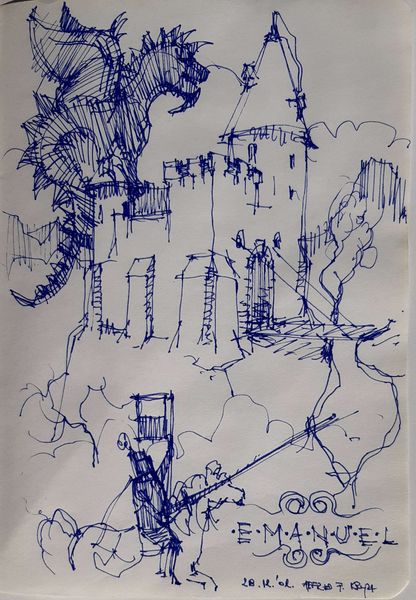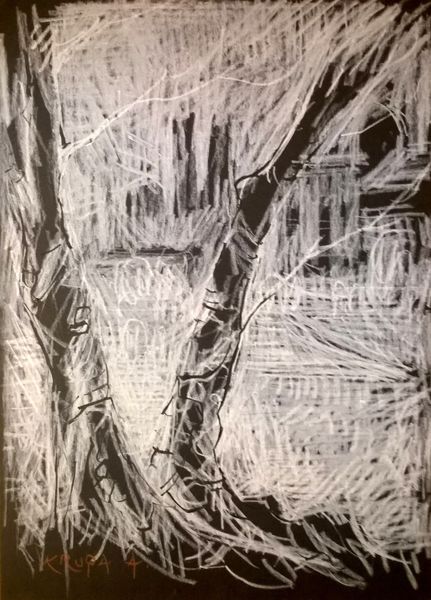
#
thin stroke sketch
#
junji ito style
#
ink line art
#
linework heavy
#
ink drawing experimentation
#
pen-ink sketch
#
thin linework
#
limited contrast and shading
#
doodle art
#
initial sketch
Dimensions: 27 x 24 cm
Copyright: Creative Commons NonCommercial
Curator: Alfred Freddy Krupa created "Birch and the Edison Cinema Dome" in 1994. The medium appears to be ink on paper. Editor: The stark contrast and simplified forms give it a somewhat melancholic air, don't you think? It reminds me of the transience of everyday structures alongside nature's persistence. Curator: Yes, that fragility is pronounced, particularly in how Krupa renders architectural spaces against natural forms. Focusing on its making, it’s clear the emphasis here isn't on detailed realism. Rather, the rapid lines and open composition invite considerations of what tools were at hand. Were these quick impressions made on location, reflecting immediate surroundings? Editor: Exactly. And situating this sketch in its historical moment, 1994 – post-socialist transition in Eastern Europe – makes you wonder if it is commenting on cultural shifts? The Edison Cinema Dome perhaps representing a decaying emblem, in contrast to a living Birch... There's tension embedded between organic and industrial elements, echoing debates around progress. Curator: It's all line work and it focuses only on form; let's look closer. The application of ink looks spontaneous yet disciplined; consider that his production method must allow fast, clear notation that gives prominence to key relationships of size and space. And beyond individual interpretation, does this bear relationships to art styles and processes typical to that region and/or his other work? Editor: Undoubtedly. Zooming out, those simple architectural symbols might touch on accessibility to information/cultural capital while also critiquing consumption habits facilitated via the media that the 'Cinema Dome' came to embody. We can definitely appreciate an intersection between cultural statement and critique by looking closer! Curator: Thank you; that adds another layer that prompts wider interpretation, which speaks more to that time period from a historical context as well. Editor: Precisely. It makes one consider not only what's being represented but *why* it's depicted at all!
Comments
No comments
Be the first to comment and join the conversation on the ultimate creative platform.
